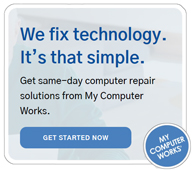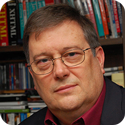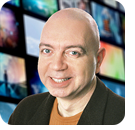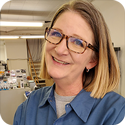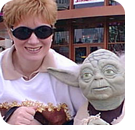|
In this issue EDITORIAL: The Last LangaList LANGALIST: Shutdown.exe /f SILICON: What technology will run your life a few years from now? Additional articles in the PLUS issue FREEWARE SPOTLIGHT: Dock Folders – It’s The Pretty Things … ON SECURITY: Is this the end of the road for Windows 7?
EDITORIAL The Last LangaList
By Will Fastie Fred’s retiring. I don’t know where to start, but people keep telling me I should start from the beginning. For me, that was about 30 years ago, when I visited Fred at CMP in search of an editing job after PC Tech Journal unexpectedly shuttered. We knew each other by reputation, of course, but had never met in person — remarkable because we both endured the same, endless trade shows, and most editors knew one another. He didn’t hire me. I forgive him. That we converged again at this newsletter, after so many decades, can only be called serendipity. It’s also been great. We’ve got a stellar lineup of writers, but there’s little doubt that Fred leads the pack. You agree. In our reader surveys this year, we asked two questions about which writers you liked the best. Fred won the top spot in both. My brief interlude with Fred, a mere 18 months, is a blink in the eye of his long and distinguished career in the computer trade press. Neither his brief bio at the bottom of his final column below nor his entry in our masthead does justice to his contributions. But if you need further confirmation, look no further than Chris Husted’s profile Meet Fred, the empowerer (2022-08-02, available to all readers). I’m not the only one with a high opinion of Fred. Kudos
Try as I might to find someone to out Fred as despicable, I failed. Here’s the worst I could get. From Roberta Scholz To say it’s been a pleasure to work with Fred Langa for the past 12 years is an understatement. It has also been reassuring: Fred’s work is exceptionally reliable and authentic. Anyone familiar with his work knows that he carefully researches his articles and always has the reader’s needs in mind. Very few writers could churn out hundreds (thousands?) of articles over a lifetime, each one dedicated to making complex problems easier to understand and to remedy. This is what Fred does. Fred’s gift to our readers is his ability to engage with us in such a way that we feel he is sitting next to us, guiding us through the steps of fixing whatever needs fixing and bringing intelligence, humor, and experience to our dilemmas. He understands that some of us are comfortable with tech matters, and some of us are not. It doesn’t matter: he will lead us gently to a solution, if there is one. I will miss reading Fred’s weekly articles in the future. He is an institution in our world, and there are few who can fill his shoes. We dare to hope that he will check in from time to time and find new ways to enlighten us! May his retirement be as fulfilling as his career has been. From Tracey Capen Having worked with Fred for nearly a decade, I can confidently say that he was this editor’s dream writer. He almost never missed a deadline, and his columns were fully formatted for the newsletter (yes, he even included captions for images!), technically accurate, and, most important, interesting. Over the years and various Windows Secrets/AskWoody iterations, I received myriad letters from readers who depended on Fred’s tips and advice. And that all-important support extended a blurb in the newsletter. As I recall, on more than one occasion, Fred would pause on his motorcycle road trips, to make personal “House calls.” For many subscribers, this is truly the end of an era. From Susan Bradley Smart. Thoughtful. Respectful. Always able to concisely recap what ails you. Or rather your technology. He has been part of the Windows technology world probably longer than Bill Gates now that Bill has stepped away from Microsoft. I can’t even encapsulate all the things I’ve learned from Fred over the years, except for this one overarching thought: Ultimately I am the master of my technology, not the other way around. From Woody Leonhard I’ve been a fan of Fred’s writing since the days of Windows Magazine, goin’ on 25 years ago. When he joined the Windows Secrets crew 15 years ago, I was thrilled — and more than a bit intimidated. Fred’s always had a keen eye for trouble spots, and his nonpareil advice flows like manna from heaven. I’ll miss tales of the Honda Goldwing he used to deliver computer help, up close and personal. I’ll also miss the stories about all of the kids he’s helped, with donations spanning decades. Fred’s all about helping other people, and for that reason most of all, I’m proud to call him a friend. Good luck, Fred! From Brian Livingston Ever since Fred was the editor of the old Byte Magazine, I’ve admired his commitment to technology users. He and I successfully merged the LangaList Newsletter and the Windows Secrets Newsletter in 2006, and lately his columns and mine have been appearing side-by-side in various issues of the AskWoody Newsletter. After his many decades of service, I wish him well in his much-deserved golden years. The future
Fred is not vanishing, of course, and may even grace our pages again. What has come to an end is LangaList, at least new columns — the LangaList archive will remain here. I had a nice chat with Fred about his decision and he offered up a cogent explanation. He has other interests now, some away from computing, and he no longer wants to spend the necessary time keeping current. While that might sound a bit odd, Fred is a deep Windows expert and has been, for decades, able to field any question on the subject. And I’m not talking about routine stuff here — who knows enough about OneDrive and SymLinks to describe their relationship? It takes a lot of work and energy to operate at that high skill level, and Fred clearly wants to redirect that time elsewhere. It has been my distinct privilege to work with Fred. I join all of you in wishing him well.
Will Fastie is editor in chief of the AskWoody Plus Newsletter.
LANGALIST Shutdown.exe /f
By Fred Langa As this weekly column reaches the end of its 25-year run, it’s a bittersweet moment for me. But in large part because of you, dear reader, there’s far more sweet than bitter! Thank you!
When I started the LangaList 25 years ago, fresh from a gig at Windows Magazine, I had zero subscribers, and no idea if an email newsletter would last even a few issues. Want a grin? Back then, in 1997, there were only about 100,000 websites in the entire world. (Today, there are over 1.7 billion.) Google didn’t exist. Most people still got online via dial-up services like America Online and CompuServe. Netscape was the overwhelmingly dominant browser. Rewritable CDs were cutting-edge storage technology. I set up shop in my home’s basement. If memory serves, the centerpiece tech was a brand-new Pentium MMX CPU running at 0.2GHz (or, as we said it then, 200MHz). I don’t remember how much RAM, but it wouldn’t have been a lot — memory cost around $10/MB (not GB) then. I got online via a dial-up voice line using a 28.8Kbps modem. Yes, things have changed a bit. And so have I. After a total of 50 years of publication deadlines — 25 years online, and 25 years before that in the old ink-on-paper magazine world — I’m ready to step away from the keyboard and see what a less-regimented life is like. Oh, I’ll still be around, and you may even see an occasional article from me. But this weekly column has run its course. The iceberg model
A bylined column, like the one you’re reading now, is a little like an iceberg. The writer sits happily, visibly, on top. But that writer is supported by an array of helpers who labor mostly out of sight, below the surface: publishers, editors, copyeditors, writers, artists, and all the other staff and volunteers. It adds up to a small army of people who’ve helped me along the way — far too many to list! But if you’ll excuse the overly broad brushstrokes, and forgive any omissions, I’d like to publicly express my thanks and gratitude to the folks I’ve worked with for the last 15 years — AskWoody’s and Windows Secrets’ current and past crews: Woody Leonhard himself, Susan Bradley, Brian Livingston, Will Fastie, Roberta Scholz, Tracey Capen, Dennis O’Reilly, Kathleen Atkins, and many, many others. For the decade earlier, when the LangaList was a self-published, mostly one-person operation, I owe major thanks to my long-suffering family, who put up with my insane (but entirely self-induced) seven-day-a-week workload. And earlier still, I learned tons about tech, about writing, and about publishing from talented staffs and colleagues at Windows Magazine, Byte, and others. Truly, to all, my thanks. Closing the loop
Most of all, I’d like to offer my most profound thanks to you — yes, you, the person reading this. It’s you and others like you who’ve made this whole journey worthwhile. You see, full-time writing is a very odd profession. It’s mostly done in isolation, without any immediate feedback. Because the actions of the writer are separated in time and space from the reactions of the reader, writing can feel a little like shouting into a void and hoping for an eventual echo. It can be weird and a little lonely. But you and your fellow readers provided the missing feedback. Often, it was in the form of your signups and subscriptions; that’s literally what kept the business going! But just as often, it was also in the form of reader mail brimming with good ideas, insightful questions, needful corrections, legitimate complaints, and an abundance of freely given facts, anecdotes, and information that directly helped inform, shape, and focus these columns. At its best, it’s felt to me like a collaboration: you and I sharing information back and forth, like friends helping each other work toward a common goal. That sense of collaboration and helping is the part I’ll miss most. But the constant deadlines? Not so much! To everyone who’s read or subscribed to my work, to everyone who’s written to me over the years: thank you, most sincerely!
Fred Langa has been writing about tech — and, specifically, about personal computing — for as long as there have been PCs. And he is one of the founding members of the original Windows Secrets newsletter. Check out Langa.com for all of Fred’s current projects.
SILICON What technology will run your life a few years from now?
By Brian Livingston “My interest is in the future, because I’m going to spend the rest of my life there,” said Charles Kettering, the head of research at General Motors from 1920 to 1947. I’m sure his statement is true. Time travel into the future isn’t science fiction — we all do it every day at the usual speed. But what kind of a future will it be, and can we head off the worst aspects of it? You’ve certainly heard of the famous Turing test. British mathematician Alan Turing defined it in 1950 as a form of the then-popular “Imitation Game.” In this parlor pastime, two people — a man, A, and a woman, B — go into separate rooms. Others in the party send handwritten notes to both of the hidden people. The object of the game is to guess from the typewritten replies which person is male and which is female.
“What will happen when a machine takes the part of A in this game?” Turing wrote. A supercomputer — decades hence, he opined — wouldn’t have to master what we call “thinking” in order to converse as humans do. (Plaque photo, left, by Wikimedia) Using artificial intelligence, computers are already pretty good at passing this test. On the rare occasions when I need to call a customer-service representative, I can barely tell the difference between AI and a live person. But the computers have, shall we say, a “dead” giveaway. If I ask an airline rep whether I can change a flight reservation, an actual person is initially hesitant and must look it up. By contrast, a computer-generated voice instantly displays confidence in its answer. This is but a small example of the maddeningly indisputable certainty with which our computer overlords will rule us in the future. Artificial-intelligence developers already have a workaround, though, for this “tell.” AI programs can be taught how to speak with a bit of unsureness, how to stumble slightly over an occasional word, how often to make typing errors, and so forth. A 1992 article in The Economist called these necessary adaptations “artificial stupidity.” Let’s say my flight happens to cover 2,500 miles. I might ask the rep, “How far is that in kilometers?” If the voice on the phone immediately replies, “4,023.36 kilometers,” I know for sure it’s an AI. A live human would say, “Please hold a minute while I check.” Silicon is rapidly rushing toward a future of unlimited stupidity
Gordon Moore, who was then Fairchild Semiconductor’s director of R&D, wrote in 1965 that integrated circuits would double their number of components every year until they hit 65,000 by 1975 (PDF, Intel). Right on schedule, such dense chips were actually shipping on that date. Moore, having by that time become president of Intel, then modified the rule to “every two years.” This rate of semiconductor densification remained more or less true for decades, following a pattern we now know as Moore’s Law (PDF, Lithoguru). It’s arguable whether his law is still in effect. “It’s over,” computer scientist Charles Leiserson told MIT Technology Review in 2020. “This year that became really clear.” Intel had released chips in 2014 with components as small as 14 nanometers (about 1/6000 the width of a human hair). But it wasn’t until 2019 — five long years later — that the company could make chips with features 10 nanometers wide, the size of 30 atoms (not ounces) of pure gold.
Given Intel’s difficulties, the computer industry was ripe for a bit of a shock. Apple released on March 8, 2022, its new Mac Studio computer, which is powered by the company’s own M1 Ultra silicon. (See Will Fastie’s column on the announcement.) In a direct challenge to Intel, whose chips the Cupertino giant formerly used, the M1 Ultra chip is manufactured using component widths of only 5 nanometers — half the thickness of Intel’s own output. There’s no doubt that the M1 Ultra is fast and power-efficient. The chip’s 114 billion transistors support 20 CPU cores, up to 64 GPU cores, and a 32-core Neural Engine. The latter will supercharge the development of, shall we say, ultra-sophisticated artificial-intelligence agents. Unfortunately for Apple, testers began running benchmarks on the new chip. (See Figure 1.) The reviewer for Digital Trends, Jacob Roach, writes: Apple seems hell-bent on providing oversimplified benchmarks when it announces deeply technical products like the M1 Ultra, but all that does is make Apple look ridiculous once those products are here. … Apple is measuring GPU performance against its power draw, which speaks to the efficiency of the M1 Ultra. And it’s a highly efficient chip. The problem is that Apple can also claim that the M1 Ultra is faster than the RTX 3090 when it isn’t. … And for those who don’t know about competing PC components, Apple is downright lying. The graph in Apple’s announcement cuts off the horizontal axis at 320 watts of power consumption. But Nvidia’s RTX 3090 GPU can draw close to 400 watts and beats Apple’s Ultra. Unfortunately, the computer industry long ago became entranced by raw performance as the most meaningful metric for silicon. The people I know whose work depends on personal computers are much more interested in a new chip’s infant-mortality rate (frying soon after startup) and compatibility with systems they’re already using. We may not need artificial stupidity — it looks like there’s plenty of the plain-old, human kind. All those chips don’t just come to us out of thin air
It’s inevitable that processors in the future will be faster, smaller, more powerful, and more energy-efficient than the ones that came before. As an extreme example of miniaturization, doctors will begin injecting microscopic nano robots (nanobots) into human patients by 2030 to remove cancer cells and deliver life-saving drugs, according to an Interesting Engineering article. The big question is where all those new devices will come from. Because of expensive clean-room facilities and other requirements, building a highly advanced semiconductor fabrication plant now costs $16 billion or more (see Figure 2), says an MIT Technology Review story, which adds: Not coincidentally, the number of companies with plans to make the next generation of chips has now shrunk to only three, down from eight in 2010 and 25 in 2002.
The three largest players that dominate fabrication of the most advanced semiconductors (and where their headquarters are located) are:
TSMC is the manufacturer of Apple’s M1 series and other chips. The Taiwan-based company produces more than 90% of the world’s supply of the most advanced semiconductors — the kinds used in consumer electronics and military weaponry, according to a Reuters article. The recent global shortage of semiconductors has, ahem, chipped away at entire industries. Largely because COVID-19 absences slowed fab output to auto makers, the United States alone produced 7.7 million fewer new cars than planned in 2021, fueling inflation, as explained in an Autoblog analysis. But that much economic disruption would be nothing compared to other geopolitical upsets. What if China attempted to invade or even just blockade Taiwan — arguing that it’s a breakaway province — perhaps emboldened by the West’s concentration on the war in Ukraine? Taiwanese fab plants might be some of the first facilities to close, even if they weren’t directly attacked. Let’s all pray for peace. How the pace of change affects your future is the focus of my report
Watch for the next five parts of my special report on the breakneck evolution of silicon and its impacts on you. Look for the following installments in AskWoody every two to three weeks going forward:
This six-part report is part of Brian Livingston’s campaign to give you consumer protection from tech. If it’s irritating you, and it has an “on” switch, he’ll take the case! Brian is a successful dot-com entrepreneur, author or co-author of 11 Windows Secrets books, and author of the new fintech book Muscular Portfolios. Get his free monthly newsletter.
The AskWoody Newsletters are published by AskWoody Tech LLC, Fresno, CA USA.
Your subscription:
Microsoft and Windows are registered trademarks of Microsoft Corporation. AskWoody, AskWoody.com, Windows Secrets Newsletter, WindowsSecrets.com, WinFind, Windows Gizmos, Security Baseline, Perimeter Scan, Wacky Web Week, the Windows Secrets Logo Design (W, S or road, and Star), and the slogan Everything Microsoft Forgot to Mention all are trademarks and service marks of AskWoody Tech LLC. All other marks are the trademarks or service marks of their respective owners. Copyright ©2022 AskWoody Tech LLC. All rights reserved. |
||||||||||||||||||||||||||||||||


